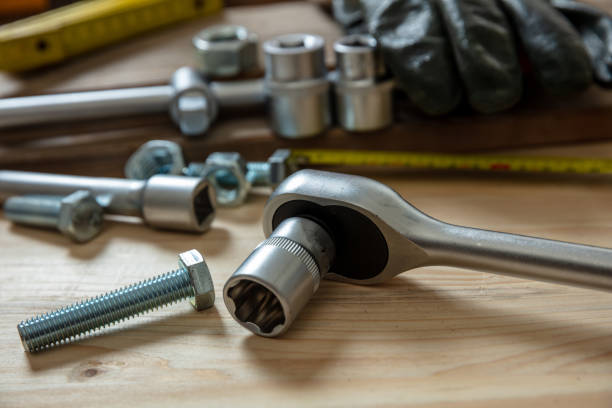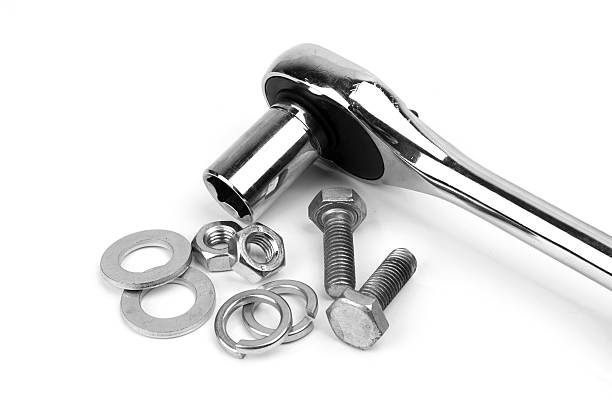In the world of mechanical engineering and construction, ensuring the proper tightness of bolts is crucial for the safety and integrity of structures and machinery. A torque wrench is a specialized tool designed to apply a specific amount of torque or rotational force to a bolt. With its ability to measure and control torque accurately, a torque wrench is an indispensable instrument for any professional or DIY enthusiast working with bolts. In this comprehensive guide, we will explore the different types of torque wrenches, their applications, and provide answers to frequently asked questions about their usage.

Understanding Torque and its Importance
Before delving into the specifics of torque wrenches, it’s essential to understand what torque is and why it is crucial in various applications. Torque refers to the rotational force applied to an object around an axis, usually measured in Newton-meters (Nm) or foot-pounds (ft-lb). In mechanical systems, torque plays a fundamental role in maintaining the stability and integrity of connections between components. Insufficient or excessive torque can lead to bolt failure, compromised structural integrity, or even catastrophic accidents.
The Purpose and Function of a Torque Wrench
A torque wrench is a specialized tool designed to apply a specific amount of torque to a bolt or nut. It ensures that the proper level of tightness is achieved, preventing both under-tightening and over-tightening. The primary function of a torque wrench is to measure the applied torque accurately and provide a signal or visual indication when the desired torque value is reached. By using a torque wrench, you can achieve consistent and precise tightening, adhering to recommended torque specifications for specific applications.
Types of Torque Wrenches
Torque wrenches come in various types, each suitable for different applications and environments. Let’s explore the most common types of torque wrenches:
Click-Type Torque Wrenches
Click-type torque wrenches are the most prevalent and widely used. They operate based on a click mechanism that produces an audible or tactile signal when the desired torque is reached. These wrenches offer reliable and straightforward torque control and are available in both mechanical and electronic variants.
Beam-Type Torque Wrenches
Beam-type torque wrenches feature a simple and robust design. They utilize a calibrated bending beam to indicate the torque value being applied. These wrenches are known for their durability and do not require regular calibration. However, they lack the convenience of a click-type wrench’s audible or tactile signal.
Digital Torque Wrenches
Digital torque wrenches provide precise torque measurement and are often equipped with an LCD display to show the applied torque value. They offer excellent readability and may include additional features like data logging and wireless connectivity. Digital wrenches are commonly used in professional settings where accuracy is paramount.
Electronic Torque Wrenches
Electronic torque wrenches combine the benefits of digital technology with advanced features. They offer precise torque measurement and often include programmable settings, multiple units of measurement, and the ability to store torque values for future reference. Electronic torque wrenches are popular in industries where complex torque applications are involved.
Hydraulic Torque Wrenches
Hydraulic torque wrenches are powerful tools designed for heavy-duty applications. They utilize hydraulic pressure to apply torque and are capable of delivering high levels of force. These wrenches are commonly used in industries such as construction, mining, and oil and gas.
Pneumatic Torque Wrenches
Pneumatic torque wrenches, also known as air-powered torque wrenches, utilize compressed air to generate torque. They are lightweight, easy to use, and provide high-speed torque application. Pneumatic wrenches are commonly employed in automotive and industrial assembly lines.
Micrometer Torque Wrenches
Micrometer torque wrenches are known for their precision and accuracy. They feature a micrometer-like scale that allows for fine adjustments in torque settings. These wrenches are commonly used in applications where small increments of torque are critical.
Deflecting Beam Torque Wrenches
Deflecting beam torque wrenches operate on the principle of a deflecting beam, which flexes when torque is applied. They provide visual indications of torque and are known for their durability and reliability. Deflecting beam wrenches are commonly used in aerospace and aviation industries.
No-Hub Torque Wrenches
No-hub torque wrenches are specially designed for tightening no-hub couplings used in plumbing systems. They provide the specific torque required for these connections, ensuring a leak-proof and secure joint.
Interchangeable Head Torque Wrenches
Interchangeable head torque wrenches allow for easy swapping of socket heads to accommodate different bolt sizes and types. These wrenches offer versatility and convenience, making them suitable for a wide range of applications.

How to Choose the Right Torque Wrench
Selecting the right torque wrench for your specific needs is crucial to ensure accurate and reliable results. Here are some factors to consider when choosing a torque wrench:
Consider the Torque Range
Different applications require different torque ranges. Determine the minimum and maximum torque values you will need and choose a wrench that covers that range adequately.
Evaluate Accuracy and Calibration
Accuracy is essential when it comes to torque wrenches. Look for wrenches with high accuracy ratings and consider their calibration requirements. Some wrenches may require periodic calibration to maintain their accuracy.
Assess the Type of Work
Consider the nature of your work and the environments in which you will be using the torque wrench. Some wrenches are more suitable for heavy-duty applications, while others excel in precision tasks.
Consider the Durability and Quality
Invest in a torque wrench made from high-quality materials that can withstand regular use and provide long-term durability. Wrenches with robust construction and reliable components are worth considering.
Check the Size and Weight
The size and weight of the torque wrench can impact its usability, especially in tight spaces or overhead work. Choose a wrench that is comfortable to handle and maneuver in your specific work environment.
Evaluate Additional Features
Some torque wrenches come with additional features such as data logging, digital displays, or wireless connectivity. Assess these features to determine if they align with your specific requirements and enhance your workflow.
Using a Torque Wrench: Step-by-Step Guide
Now that we understand the different types of torque wrenches and how to choose the right one, let’s explore the step-by-step process of using a torque wrench effectively:
Prepare the Work Area
Before using a torque wrench, ensure that the work area is clean and free from debris. Remove any dirt, grease, or other substances that may affect the accuracy of the torque readings.
Select the Correct Socket
Choose the appropriate socket size and type that matches the bolt or nut you are working with. Using the wrong socket can result in improper torque application and potential damage.
Set the Desired Torque Value
Refer to the manufacturer’s specifications or engineering guidelines to determine the recommended torque value for the specific application. Adjust the torque wrench to the desired torque value using the provided scale or digital display.
Apply Torque to the Bolt
Position the torque wrench on the bolt or nut and apply steady force in a clockwise direction. Keep a firm grip on the wrench while ensuring that it remains perpendicular to the fastener.
Release the Tension
Once the desired torque value is reached, you will hear a click, feel a tactile signal, or see a visual indication (depending on the type of torque wrench). Stop applying force immediately to prevent over-tightening.

Common FAQs about Torque Wrenches
What is the purpose of a torque wrench?
A torque wrench is used to apply a specific amount of rotational force (torque) to a bolt or nut. It ensures that the correct level of tightness is achieved, preventing under-tightening or over-tightening.
Why is using a torque wrench important?
Using a torque wrench is crucial to ensure the proper functioning, safety, and longevity of mechanical systems. It helps prevent bolt failure, leaks, and structural damage caused by improper torque application.
How does a torque wrench work?
A torque wrench works by utilizing a mechanism (such as a click, beam deflection, or digital sensor) to measure the amount of torque being applied. When the desired torque value is reached, the wrench provides an audible, tactile, or visual signal to indicate that the target torque has been achieved.
What are the different types of torque wrenches?
There are several types of torque wrenches available, including click-type, beam-type, digital, electronic, hydraulic, pneumatic, micrometer, deflecting beam, no-hub, and interchangeable head torque wrenches. Each type has its unique features and applications.
How do I calibrate a torque wrench?
Calibration procedures may vary depending on the type and manufacturer of the torque wrench. It is recommended to follow the guidelines provided by the manufacturer or consult a professional calibration service to ensure accurate readings.
Can I use a torque wrench for non-automotive applications?
Yes, torque wrenches are not limited to automotive applications. They are widely used in various industries, including construction, aviation, manufacturing, and maintenance, where precise torque application is necessary.
Conclusion
A torque wrench is an indispensable tool for anyone working with bolts and nuts. Its ability to apply precise and controlled torque ensures the integrity and safety of mechanical connections. By choosing the right torque wrench and following proper usage techniques, you can achieve accurate and reliable torque application in a wide range of applications. Remember to refer to manufacturer specifications and engineering guidelines to ensure you are using the correct torque values for specific tasks. With a torque wrench in your toolkit, you can tighten bolts with confidence and precision.



